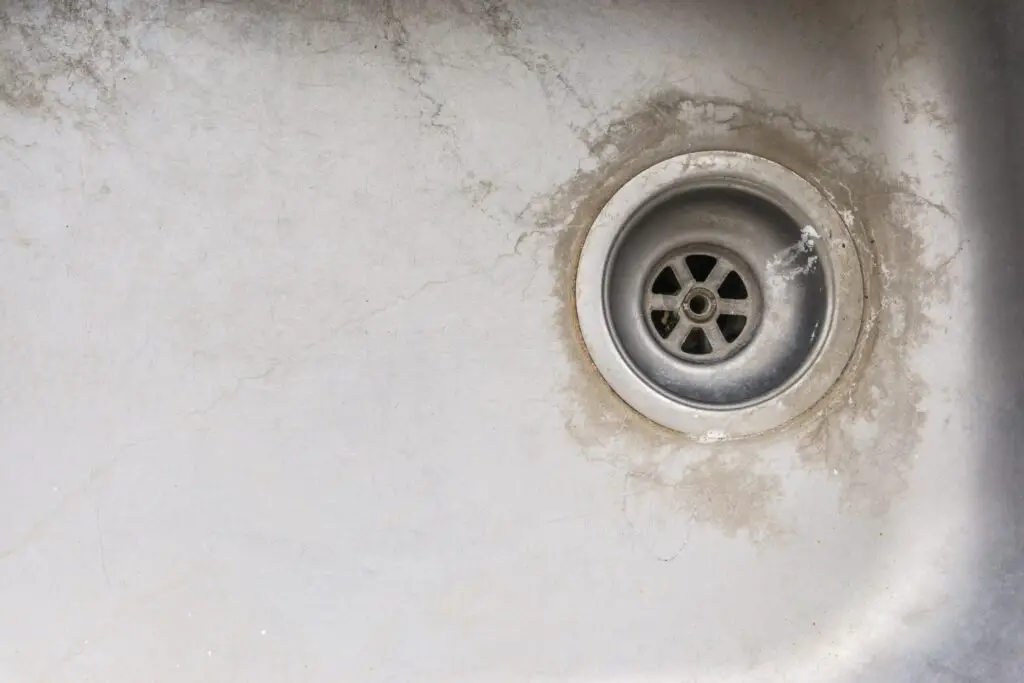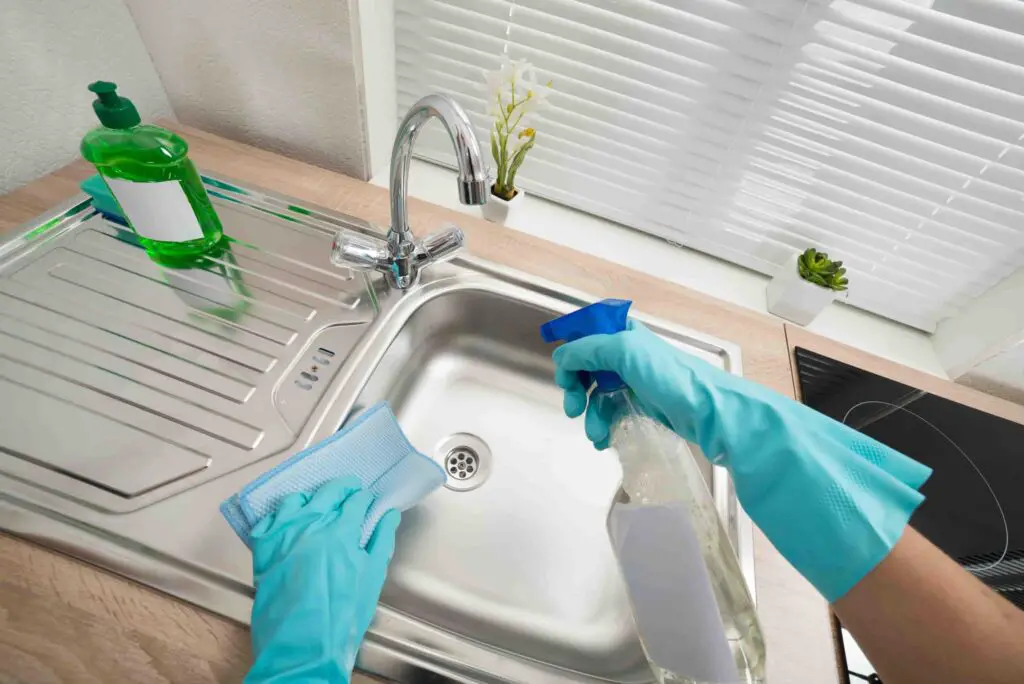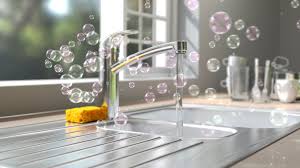Do you have chemical stains on your stainless steel sink? Have you been wondering how to remove them? If so, you’ve come to the right place! In this blog post, we’ll show you the fastest way to remove chemical stains from your sink and have it look as good as new in no time.
Read on to find out how to get your sink sparkling clean again!
How to remove chemical stains from stainless steel sink
In this blog post, we’ll discuss the quickest and most effective way to remove chemical stains from your sink. We’ll go over the supplies you’ll need, the cleaning methods you should follow, and tips to keep your sink looking clean and shiny for years to come. So, if you’re looking for a quick solution on how to remove chemical stains from your sink, keep reading and you’ll be one step closer to having a cleaner sink in no time!
Identifying the Type of Chemical Stain

When faced with a chemical stain on your stainless steel sink, it’s crucial to identify the type of stain before attempting to remove it. This will allow you to choose the most effective method for cleaning it.
Two common types of chemical stains are caused by acidic and alkaline substances.
Acidic stains
Acidic stains can result from spills of citrus juices or vinegar, appearing as dark spots on the sink’s surface. Acidic stains are typically darker with a rough texture.
Alkaline stains
Alkaline stains, on the other hand, can result from bleach or ammonia and can leave a dull, discolored patch on the sink. Alkaline stains tend to be lighter and smoother.
To identify the type of stain, consider what substances may have come into contact with the sink recently and take note of the stain’s color and texture. By accurately identifying the type of chemical stain, you can proceed with the appropriate cleaning method.
Gather Your Cleaning Materials

Now that you know what type of chemical stain you’re dealing with, it’s time to gather your cleaning materials to effectively tackle the problem. Don’t worry, you won’t need anything fancy or hard to find. In fact, you probably already have most of these items in your kitchen!
First and foremost, you’ll need some distilled white vinegar. This miracle ingredient is not only great for cooking but also works wonders on stains. You’ll also need some baking soda, which is a natural and gentle abrasive that can help scrub away stubborn stains. A microfiber cloth or sponge will come in handy for scrubbing and wiping down the sink.
For those tougher stains, you may want to have some lemon juice on hand. The acidity in lemons can help break down and remove stains effectively. If you don’t have fresh lemons, you can also use lemon juice from a bottle. Additionally, you’ll need a soft-bristled brush or toothbrush to scrub away any remaining residue.
Lastly, make sure to have some warm water available. This will be used to rinse off the cleaning solutions and leave your sink looking sparkling clean.
Now that you have all your cleaning materials ready, it’s time to move on to the next step:
Natural Methods for Removing Chemical Stains

Now that you’ve identified the type of chemical stain on your stainless steel sink and gathered your cleaning materials, it’s time to learn about the natural methods for removing those stubborn stains. These methods are not only effective but also safe for both you and the environment.
Baking soda and water
One natural method is to create a paste using baking soda and water. Start by wetting the sink and then sprinkle a generous amount of baking soda onto the surface. Use a sponge or soft-bristled brush to scrub the paste into the stain, applying gentle pressure. Allow the paste to sit for a few minutes, then rinse with warm water. You’ll be amazed at how easily the stain comes off!
Distilled white vinegar
Another natural method is to use distilled white vinegar. Simply soak a cloth or sponge in vinegar and scrub the stained areas. The acidity of the vinegar will break down the chemical stain, leaving your sink spotless. Rinse with warm water after scrubbing.
Lemon juice
For tougher stains, you can try using lemon juice. Squeeze fresh lemon juice onto the stain and let it sit for a few minutes. Then, use a soft-bristled brush to scrub away the stain. Lemon juice is a natural acid that works wonders on chemical stains.
Remember to always rinse the sink thoroughly with warm water after using these natural methods to remove the stains. This will ensure that no residue is left behind and your sink is left sparkling clean.
Using Commercial Cleaners for Stubborn Stains

If natural methods aren’t cutting it in removing chemical stains from your stainless steel sink, don’t worry! There are commercial cleaners specifically designed to tackle those stubborn stains and restore your sink’s shine to a brand-new look. Two popular options include Bar Keepers Friend and Weiman Stainless Steel Cleaner and Polish.
Bar Keepers Friend
It is a powerful cleaner that removes tough stains and restores the shine to your sink. Simply sprinkle the powder onto a damp sponge or cloth, gently scrub the stained areas, and rinse with warm water. Your sink will be free of those pesky chemical stains in no time.
Weiman Stainless Steel Cleaner and Polish
It is another effective solution. It removes stains and leaves a protective barrier on your sink, making it easier to clean in the future. Spray the cleaner onto the sink, let it sit for a few moments, then wipe it away with a clean cloth.
When using commercial cleaners, carefully read and follow the instructions on the label. Some cleaners may require a specific amount of time to sit on the stain, while others may need to be diluted before use. Rinse the sink thoroughly with warm water after using a commercial cleaner to ensure that no residue is left behind.
While commercial cleaners can be effective in removing stubborn chemical stains from your sink, be aware that they may contain harsh chemicals. Use them in a well-ventilated area and wear gloves to protect your hands.
Tips for Preventing Future Chemical Stains

After removing stubborn chemical stains from your stainless steel sink, it’s crucial to prevent them from recurring. Mindful usage of your sink is key.
Avoid Harsh Chemicals
Never use harsh chemicals, abrasive pads, steel wool, or scouring powders on stainless steel sinks, as they can scratch or damage the surface. When these products are used, wipe down your sink immediately afterward to reduce damage.
Regular Cleaning
To prevent chemical stains and maintain the appearance of your stainless steel sink, clean it regularly with a mild detergent and water. Establish a cleaning routine and stick to it to prevent future chemical stains. This includes a quick wipe-down after each use and thorough cleaning once a week.
Sink mats and grids
Use sink mats or grids to protect the bottom of your sink from scratches and stains. These mats work as a barrier between your sink and potentially harmful substances, making cleaning effortless.
Test in an Inconspicuous Area
Before using any cleaning method, especially vinegar, it’s a good practice to test it in an inconspicuous area of the sink to ensure it doesn’t cause any adverse reactions.
Drying your sink
Dry your sink after cleaning or use. Standing water can promote the growth of bacteria and minerals, which leads to staining over time. Grab a clean towel and give your sink a good drying by draining all the water to maintain its shine and prevent chemical stains from forming.
Follow the Manufacturer’s Instructions
If you have a specific stainless steel sink cleaner recommended by the manufacturer, follow their instructions for stain removal. Always use gentle, non-abrasive cleaners designed specifically for stainless steel sinks to avoid scratching the surface.
By following these steps and being gentle in your approach, you should be able to effectively remove chemical stains from your stainless steel sink and restore its appearance.

